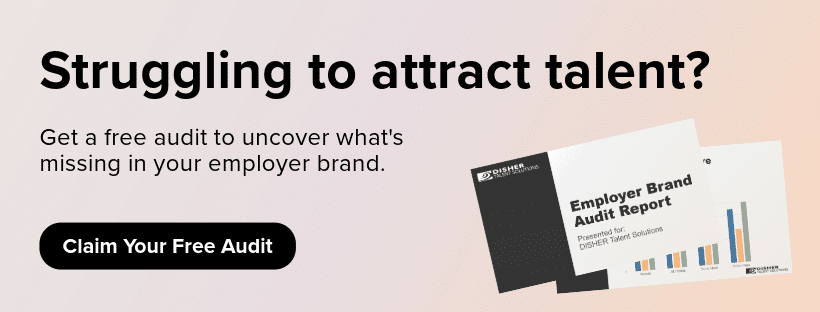How Long Does It Take to Hire a Technical Candidate? Time-to-fill Metrics Explained
May 21, 2025

You’ve had that engineering role posted for six weeks. The team is stretched thin. Projects are piling up. And you’re wondering: Why is this taking so long?
Hiring for technical roles can feel like chasing a unicorn—elusive, filled with unexpected twists, and just when you think you’ve caught a glimpse, it vanishes, leaving you back at square one. It’s frustrating, especially when you’ve got a backlog of work waiting for the right person.
We’ve helped hundreds of companies navigate technical hiring across engineering, manufacturing, IT, sales, and leadership roles. We’ve seen what slows things down and what helps speed them up, without sacrificing quality.
Now, we’re taking what we’ve learned and putting it into this guide. In it, you’ll learn:
- How long it actually takes to hire good technical talent
- What affects your time-to-fill
- How you can take back control of the process
What Does Time-to-fill Mean, and Why Does It Matter?
Time-to-fill is the number of calendar days between when a job requisition is approved and when a candidate accepts your offer.
It matters because it tells you how efficient—or not—your hiring process is. Long time-to-fill can lead to burnout on your team, missed deadlines, and lost revenue. It could be an indicator of process inefficiencies or unrealistic expectations of the role.
What Is the Average Time-to-fill for Technical Roles?
According to a survey by SHRM, the average time-to-fill for ALL roles is between 40-45 days. This is not specific to technical roles nor leadership roles, which are naturally higher. Based on that survey and our own data, we suggest you estimate 60-90 days to fill a technical role.
To give you a better idea, here’s a brief list of some time-to-fill metrics for technical roles we’ve hired recently:
- Controls engineer, automotive manufacturing: 60 days
- Director of sales, residential construction: 44 days
- Engineering manager, motorcycle manufacturing: 80 days
- Project architect, architecture and engineering services: 60 days
- Packaging technician, food and beverage manufacturing: 35 days
You can also download our Semi-Annual Hiring Metrics Report for time-to-fill stats on all the roles we’ve hired in the last six months.

What Factors Influence Time-to-fill?
Some things are in your control, others aren’t. Here’s what really affects your hiring timeline:
- Role seniority – Senior and specialized roles take longer to fill than junior ones.
- Required skills – The more specific or rare the skill set, the longer your search.
- Company size and brand – Well-known companies attract more applicants and can move faster.
- Location and remote flexibility – Remote roles often have a larger candidate pool but can also mean more applicants to screen.
- Interview process – Streamlined, well-communicated processes move faster.
Why Your Time-to-fill Metrics Might Be Higher Than Normal
Hiring technical talent is tough. It’s perfectly normal for your time-to-fill for technical positions to be higher than the overall average of 40-45 days. A junior marketing coordinator and a senior embedded firmware engineer are not going to follow the same hiring arc.
We’ve always said between 60-90 days is within a reasonable range. But if you’re outside of that, you might have a bigger issue at play. It could be:
- You might be fishing in the wrong pond – Your job posting might not be reaching the right platforms or networks.
- Your offer might not be competitive enough – If your salary and benefits don’t match market norms, candidates will walk.
- You’re over-filtering – Waiting for a unicorn candidate can drag the process out longer than necessary.
- Your employer brand needs work – Candidates research you before applying, so poor reviews or a weak online presence can kill interest.

If your time-to-fill is higher than industry averages, get honest about what’s slowing you down. Is it your process, your offer, or your expectations? Don’t just blame the market—look for what you can control.
How to Speed Up Time-to-fill Without Sacrificing Quality
There’s no magic trick, but there are ways to improve speed and keep your standards high. Here’s what we’ve found actually works.
- Define the role clearly. Start with a solid intake. What’s a “must-have” vs. “nice-to-have”?
- Streamline your process. Eliminate unnecessary steps. Make interview scheduling a priority.
- Keep candidates informed. Good communication keeps top talent engaged.
- Leverage technology. Use scheduling tools and other automated systems to help cut down the time you spend on manual/monotonous processes.
- Pre-vet candidates. Use phone interviews to ask specific technical and behavioral questions that are non-negotiable. It will save you time in your process to have those conversations early. Use skills assessments or phone screens to narrow the field quickly.
- Build a pipeline. Don’t start from scratch every time—maintain relationships with candidates that are a strong fit for your company.
Ready to Shorten Your Hiring Timeline? Let’s Talk.
If your internal team is overwhelmed, or you need a hard-to-find skill set quickly, a recruiting partner could help. But not all partners are created equal. Look for one that specializes in technical roles, understands your industry and culture, provides transparency, and brings quality candidates instead of just resumes.
We help teams streamline hiring and find vetted technical talent every day, and we’d be happy to help you, too. Contact us to get started.




